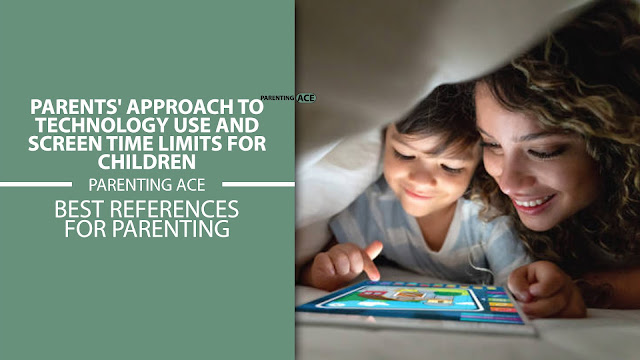How Parents Navigate Technology Use and Screen Time Limits for Their Children
In today's interconnected world, parents face a significant challenge: navigating their children's interaction with technology and setting appropriate limits on screen time. As digital devices become ubiquitous in daily life, the task of balancing the benefits of technology with its potential drawbacks has become increasingly complex. In this blog post, we delve into the intricacies of how parents address technology use and screen time limits for their children. From understanding the challenges and concerns to exploring diverse strategies employed by parents, join us as we navigate the digital landscape and seek to foster healthy relationships with technology in our families.
 |
| Parents' Approach to Technology Use and Screen Time Limits for Children |
How Do Parents Address Technology Use And Screen Time Limits?
In today's digital age, the pervasive presence of technology poses both opportunities and challenges for parents in guiding their children's development. The increasing prevalence of screens in daily life raises important questions about how parents can effectively manage technology use and set appropriate limits on screen time for their children. This article delves into the complexities of parental decision-making regarding technology use, explores various strategies employed by parents, and examines the potential impact on children's well-being.
Understanding the Challenge
Parents face a myriad of challenges when it comes to addressing technology use and screen time limits for their children. On one hand, technology offers valuable educational resources, entertainment, and opportunities for social connection. However, excessive screen time has been associated with negative outcomes such as decreased physical activity, disrupted sleep patterns, and social isolation. Moreover, the addictive nature of digital devices presents a constant struggle for parents striving to balance their children's screen time with other activities.
Strategies Employed by Parents
Parents adopt diverse strategies to address technology use and screen time limits, reflecting their values, beliefs, and individual circumstances. Some parents opt for strict limitations, imposing time restrictions and closely monitoring their children's online activities. Others take a more hands-off approach, emphasizing trust and open communication while providing guidance on responsible technology use. Additionally, many parents incorporate technology into family routines, setting designated screen-free times and engaging in joint activities to promote bonding and offline interaction.
Navigating Challenges and Concerns
Despite their best efforts, parents encounter various challenges and concerns in managing their children's technology use. Peer pressure, advertising, and the allure of social media platforms can exert powerful influences on children's screen time habits, making it difficult for parents to maintain consistent limits. Moreover, the rapid pace of technological advancements introduces new complexities, such as the integration of screens into educational settings and the proliferation of mobile devices.
The Impact on Children's Well-Being
The manner in which parents address technology use and screen time limits can have significant implications for children's well-being. Research suggests that moderate use of technology can enhance learning and social development, but excessive screen time may contribute to negative outcomes such as obesity, academic difficulties, and mental health issues. Therefore, finding a balance between harnessing the benefits of technology and mitigating its potential harms is essential for promoting healthy development in children.
In conclusion, navigating technology use and screen time limits presents a multifaceted challenge for parents striving to support their children's development in the digital age. By understanding the complexities involved, exploring various strategies, and prioritizing open communication and shared activities, parents can cultivate a balanced approach that promotes responsible technology use and fosters well-rounded growth in their children. Ultimately, the key lies in maintaining an ongoing dialogue, adapting to changing circumstances, and prioritizing the holistic well-being of the child in the digital era.




